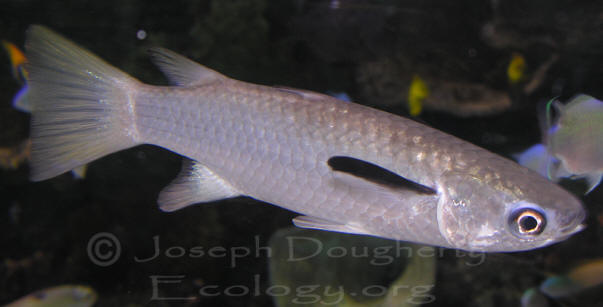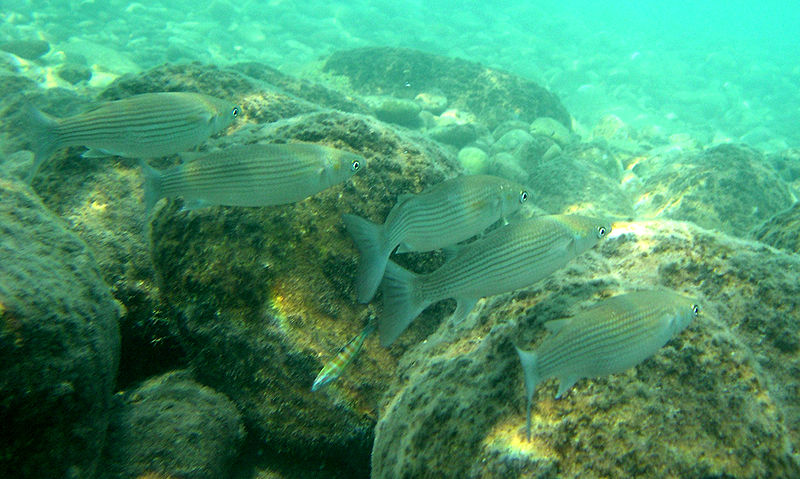Life
History/Reproduction
The squaretail
mullet (Liza vaigiensis) is a member of the grey mullet
(Mugilidae) family. Contained in this family are two primary genera:
Liza and Mugil. This knowledge is important because little
research has been done on the reproductive characteristics of Liza
vaigiensis in particular, so the information on this page has
largely been inferred from knowledge about fish of the Mugilidae family
and Liza genus in general.
Figure 5.1 Photograph of brackish water
environment conducive for striped mullet.
Liza vaigiensis generally live and thrive in brackish
water environments, but they spawn in saltwater, as do the other Mugilid
mullets (Striped Mullet 2004). In the pre- and post-spawning periods,
both male and female Mullet linger in the brackish water estuary (due to
its inherent abundance of food) before migrating to the near-shore areas
of the sea where spawning takes place (Chen et al. 1999). Liza
fish are total spawners (Chen et al. 1999), which means that they
release only one batch of eggs per breeding season (Reproduction 2013).
In the spawning process, the females release the eggs into the water and
the males release sperm to fertilize them (Spawning 2013).
Firgure 5.2 Photograph of small school of mullet (Striped Mullet) in Mediterranean Sea
It is difficult
to say exactly when the Liza vaigiensis spawning season takes place as,
again, little knowledge exists about Liza vaigiensis in
particular and, furthermore, studies have found that the time of
spawning season varies greatly between different groups (not necessarily
species) of the grey mullet, depending on geographical conditions and
environmental factors (Chen et al. 1999). Studies have observed Grey
Mullets in Sri Lanka spawning between January and February as well as
between August and September (Chen et al. 1999), while other studies
have shown grey mullets in the waters of southeastern India spawning
from July to August (Luther 1963). Thus, the spawning of mullet is
heavily dependent upon highly localized environmental factors. However,
a drop in water temperature seems to be positively correlated with the
occurrence of a mullet spawning season (Wijeyaratne and Costa 1987).
The eggs hatch
approximately two days after fertilization occurs, releasing larvae
about 2-4 millimeters long into the water. The larvae feed on a range of
things, from diatoms to algae to copepods to marine rotifers (Liao
1975). Fish of the Mugilid family generally reach sexual maturation
after approximately three years of life (Striped Mullet 2005, Minos et
al. 2010), and the cycle repeats.

